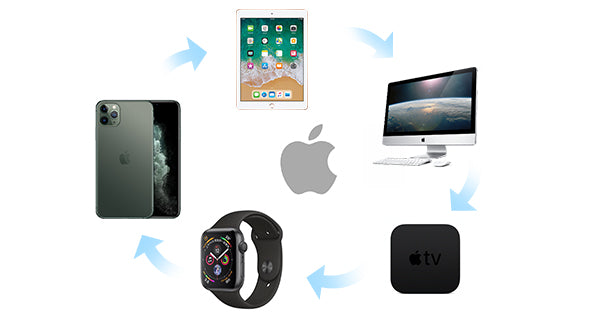There are many ways to sell products. However, even if your conversion rate is high, retention and returning sales may be low. A proven way to resolve this issue is by creating an ecosystem of products. An ecosystem is a selection of products that function together. They could integrate with each other, attempting to solve even more problems if bought together. Ecosystems work naturally, especially with today’s standard for cyclical customer experiences.

Ecosystems should be non-obtrusive. We buy into ecosystems without thought. A company that has mastered this is Apple. Their products work seamlessly with each other. Apple tries to get their customer to buy an iPhone, then tries to sell complementary products: Airpods, an Apple Watch, MacBook, etc. Another example of an ecosystem is athletic brands like Nike, Adidas, and Under Armor. Most people start by buying a pair of shoes, then buy shirts, hats, socks, and so on. Customers typically will choose one brand over another based on an ecosystem. Think about it, do you see many people combining Nike and Adidas apparel or Apple and Samsung products?
In addition to increased loyalty, ecosystems create an automatic sales funnel. Return back to the example of Apple. Apple typically convinces customers to first buy an iPhone. This is the start of their “ecosystem sales funnel.” If a customer with an iPhone is looking for a laptop, they will likely consider a MacBook. It’s familiar and works with their iPhone. As the customer goes deeper into Apple’s funnel, they will consider more of their products. Customers do not need a salesperson to convince them otherwise—their positive experiences with past purchases have solidified future ones. Research validates this, showing Apple has achieved a 92% retention among their customers. Competitors which lack a strong ecosystem have struggled. Samsung’s retention rate, for example, has dropped from 85.7% to 74%.
How do you create a competitive ecosystem? You must think about how your products can work together and better resolve your customer’s pain when combined. It can be challenging to create, but render fruitful results.
Sources
https://www.appcues.com/blog/why-companies-build-product-ecosystems
https://www.imore.com/brand-loyalty-apple-has-hit-all-time-high
I like how you discussed ecosystems within companies. It’s pretty obvious but also very sneaky how a company having an ecosystem of products that all work together would entice customers to stay with the company. It reduces their need for salespeople or as many advertisements, and keeps customers coming back. Good post!
I hadn’t heard about this before, and it was really interesting to learn about. From a buyer’s perspective, I find this annoying when it causes problems trying to transfer information from one company’s products to another. For example, trying to access the iCloud on any computer other than a MAC can be a challenge.